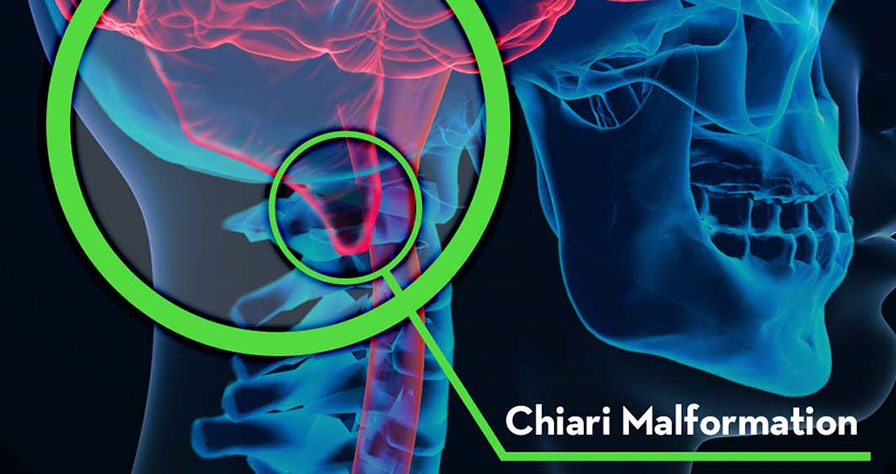Kalra Brain & Spine
At KBS, we treat our patients as neighbors, friends, and family. Our goal is to educate you, treat your symptoms, and help you recover as fast as possible
Chiari Malformation
Chiari malformation is a condition in which brain tissue extends into your spinal canal. It occurs when part of your skull is abnormally small or misshapen, pressing on your brain and forcing it downward. Chiari malformation is uncommon, but increased use of imaging tests has led to more frequent diagnoses.
Chiari malformations are categorized into three types, depending on the anatomy of the brain tissue that is displaced into the spinal canal, and whether developmental abnormalities of the brain or spine are present.
Symptoms
Headache is the most common sign of Chiari malformation, especially after sudden coughing, sneezing or straining. Other symptoms vary by person and may include:
- Neck pain
- Hearing or balance problems
- Muscle weakness or numbness
- Dizziness
- Difficulty swallowing or speaking
- Vomiting
- Ringing or buzzing in the ears (tinnitus)
- Curvature of the spine (scoliosis)
- Insomnia
- Depression
- Problems with hand coordination and fine motor skills
Some people with Chiari malformation may not show any symptoms. Symptoms can also change over time, depending on the compression of the tissue and nerves and the buildup of pressure.
Risk Factors/Causes
Chiari malformation has several different causes. In most cases, it is caused by structural defects in the brain and spinal cord that occur during fetal development.
The condition can also develop later in life if spinal fluid is drained excessively from the lumbar or thoracic areas of the spine either due to traumatic injury, disease or infection. This is called acquired or secondary Chiari malformation and is less common than the primary types.
Treatment Options
Some Chiari malformations don’t show symptoms or interfere with daily activities. In these cases, regular monitoring with MRI is recommended. When individuals experience pain or headaches, medications to help ease symptoms can be prescribed.
Surgery
In many cases, surgery is the only treatment available to ease symptoms or halt the progression of damage to the central nervous system. Surgery may improve or stabilize the symptoms.
The most common surgery to treat Chiari malformation is a procedure called posterior fossa decompression. It creates more space for the cerebellum and relieves pressure on the spinal cord. The surgery involves making an incision at the back of the head and removing a small portion of the bone at the bottom of the skull (craniectomy). In some cases, the arched, bony roof of the spinal canal, called the lamina, may also be removed (spinal laminectomy). The surgery should help restore normal function, and in some cases, it may be enough to relieve symptoms.
New Hope From a Brain Expert
When world-class training meets hometown values deeply rooted in family and community, the result is the kind of medical care you’ve always hoped for. This describes Kalra Brain & Spine, the practice of Dr. Ricky Kalra, who specializes in the most up-to-date evidence-based neurological care. If your condition requires neurosurgery, schedule a consultation with Dr. Kalra today.
Request an Appointment
Contact us
Get In Touch
Address
Kalra Brain & Spine
5899 Preston Road
Suite 1303
Frisco, TX 75034
Phone
972-905-9226

Fax
972-905-9269

